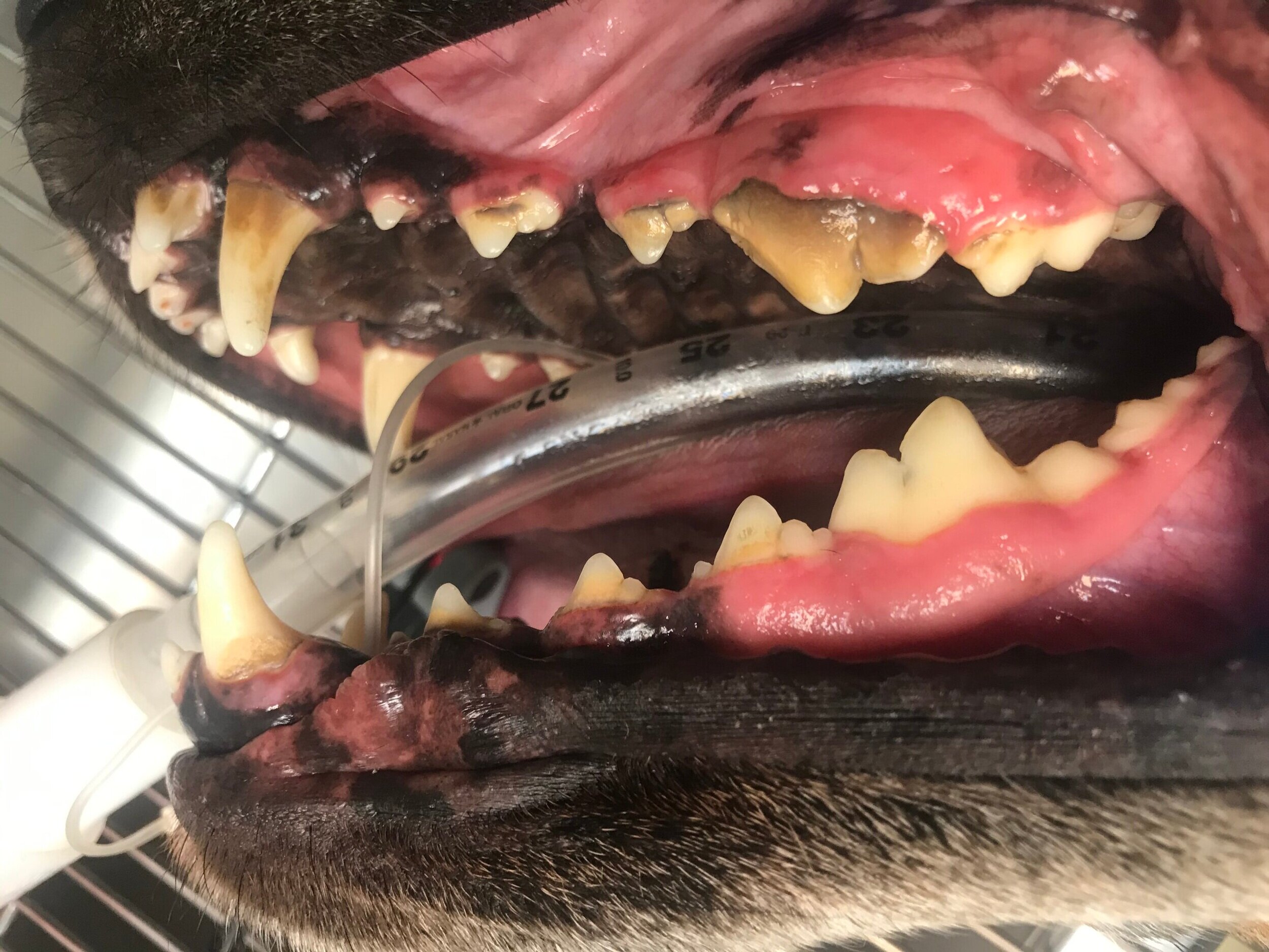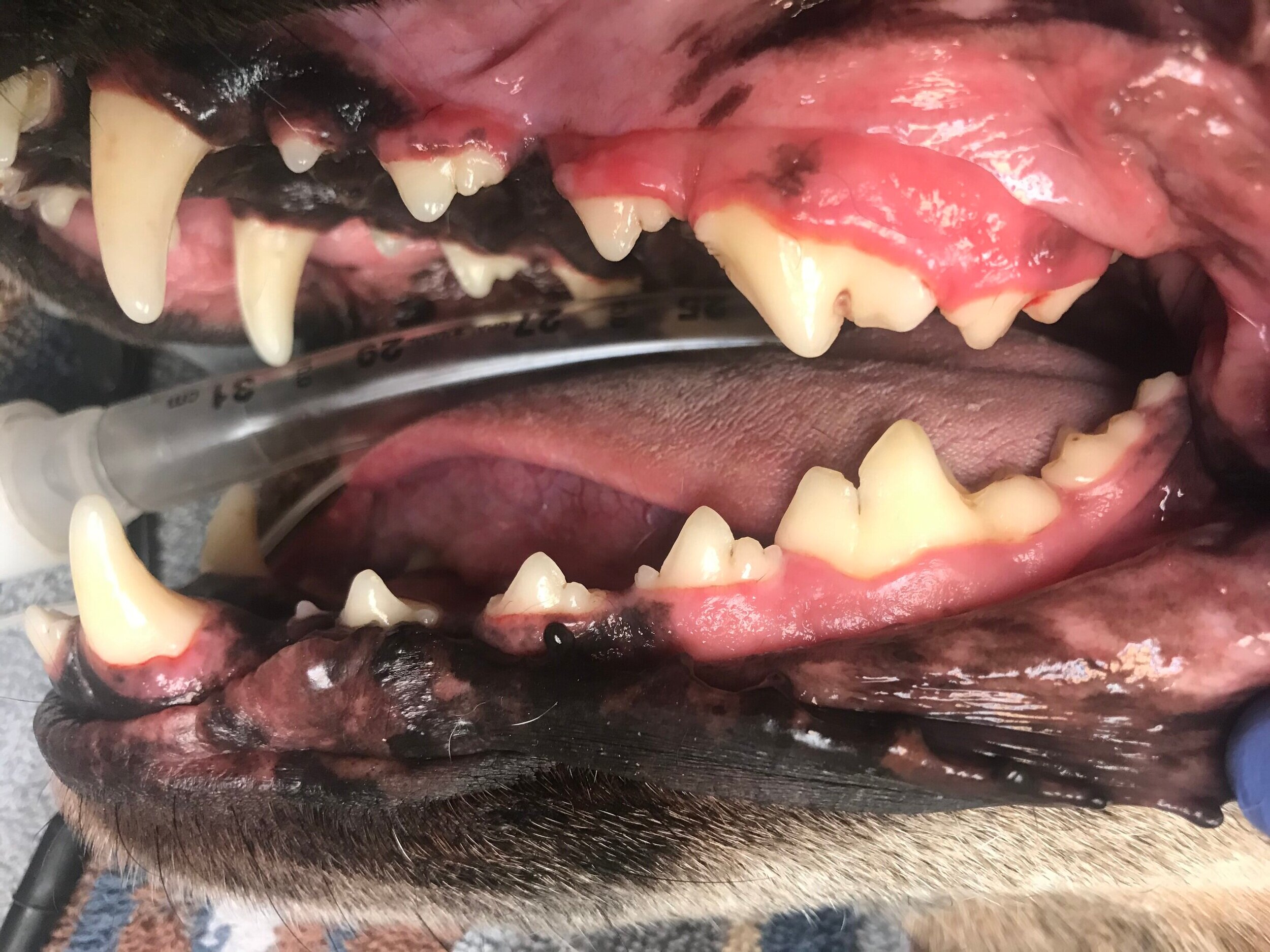Routine dental care is vital to your pet’s long-term health. Dogs and cats rarely show outward signs of painful or infected teeth, which is what makes regular periodontal examinations and treatment so important.
Periodontal Disease in Pets
Periodontal disease is the most common disease in companion animals. The periodontal tissues are the tissues that support the tooth in the mouth. Periodontal disease (PD) occurs when bacteria in the mouth combine with food particles to create a sticky film called plaque. The body’s immune system recognizes the plaque bacteria and local inflammation in the gums (aka gingivitis) occurs. Gingivitis is treatable and reversible with professional cleanings and consistent, proper home care. If left untreated, gingivitis often progresses to periodontitis. Periodontitis is inflammation of the tissues below the gum and is characterized by loss of attachment of the tooth to the gingiva, as well as bone loss. Eventually periodontitis becomes irreversible and may result in pain, infection, tooth loss and jaw fracture with severe cases. When left untreated, PD can cause infections in the heart, kidneys and liver.
Why Don’t we Recommend Anesthesia-Free Cleanings?
Nonanesthetic dentistry or anesthesia-free dental cleanings, is a procedure in which the teeth are scaled and polished without the benefit of general anesthesia. During these procedures, pets are exposed to unnecessary stress and are at higher risk of aspiration of fluid into their lungs. At our clinic, all of our dental patients are intubated with a endotracheal tube placed in their trachea (windpipe). This protects the patients airway and allows our team to safely and completely scale and polish their teeth, including the portion below the gum-line. During anesthesia-free cleanings, only the visible surfaces of the teeth are cleaned, which provides owners with a false sense of benefit to their pet’s oral health. Just like in humans, dental radiographs (x-rays) are an important part of a complete periodontal treatment. It is not possible to radiograph a pet’s teeth without general anesthesia.
We commonly hear concerns from clients about the risks involved with general anesthesia. The risks of anesthesia in healthy or minimally compromised patients are very low when performed by appropriately trained individuals. In most patients, the benefits of proper dental care greatly outweighs the risk associated with anesthesia. If you have concerns about anesthesia and your pet, or questions about dental care, please contact our office.
Before her dental cleaning, this pet had a moderate amount of dental calculus and gingivitis.
After her cleaning, the calculus has been scaled away and teeth are polished.


